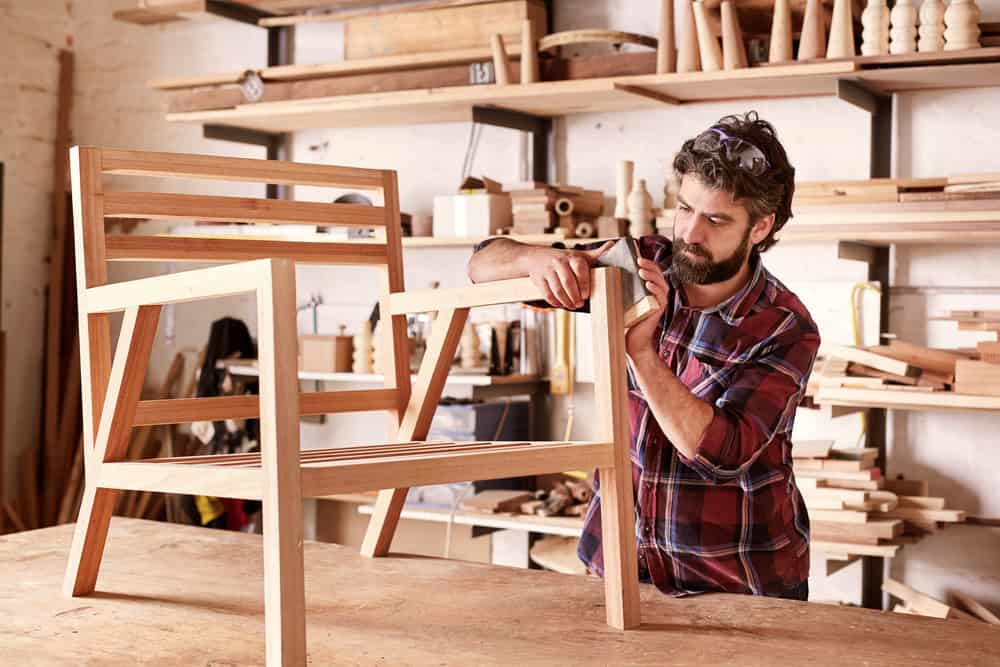Woodworking is one of the most practical and fulfilling hobbies out there. Imagine all the stuff you can do when you have the skills and know-how with wood. You can craft entire furniture for your home and even repair vintage pieces. Learning this practical DIY skill means you don’t have to call in a professional carpenter all the time.
However, woodworking takes a lot of practice. Don’t expect to be an expert or come up with professional results in a short time. Practice and learn the basics and allow yourself to grow on your skill. Soon enough, you’ll be a wood whisperer.
If you’re interested in woodworking, here are essential tips you need to know:
Getting to Know Your Wood: Different Lumber Types Give Different Results
Beginners have to know the different types of wood they’re dealing with. Novices can refer to a lumber store or professional carpenters as their guide. Not knowing enough can cause you to have costly mistakes.
Sometimes, wood doesn’t behave the way it should. It cracks when you drill it and splits the wrong way when you saw it. You have to know what to expect and how to approach the different types of wood.
Also, keep in mind that specific lumber is better suited for certain projects. Lightweight lumber is easier to manipulate but is certainly not strong, while hardwood types have their own set of challenges. Thus, it’s essential to know the type of wood grain you’re using in your project.
Types of Wood Grain
The type of wood grain depends on how it was cut and sliced. Wood grain can be flat, grain, straight grain, and curly grain. The grain dictates how your wood will move or shrink when you work on it. Some types of grain may be prone to more bowing and shrinking. If you’re thinking of building furniture, consider the wood grain because choosing the wrong type can ruin your project.
Wood reacts to the environment. Climate and moisture levels can cause the wood to expand or shrink. Hence, it’s a good idea to prepare your wood indoors before you start cutting.
Technological advancements have brought on different types of lumber to the market, and the choices can be confusing. You have to know the differences between pressure treated lumber, plywood, strand board, and fiberboards and know which is apt for your projects.
Give your local lumber store a visit and get to know the different types of lumber, including how it behaves, so you can decide on the best materials for your projects.
Setting Up Your Woodworking Space and Tools
Space is essential to woodworking because you’ll be dealing with relatively large objects. Space is also important for safety because you’ll be handling sharp and heavy tools. Although, the space where you’ll be doing your projects doesn’t have to be massive. What’s important is that it’s neat and organized.
No matter how skilled you are, you should always never be disorganized when it comes to woodworking. For instance, if you need a tool, you need to be able to access it quickly rather than spend a long time rummaging through clutter.
You should also practice woodworking safety. Some essentials you have to consider are wearing safety equipment, which includes wearing the right clothes.
If you’re working with a cutter, always work against it. Avoid consuming anything that can impair your concentration, like alcohol. Anything that will cause you to be disoriented can cause you to have accidents.
Following safety habits can be redundant and boring, but as a woodworker, you have to make it a part of your routine. As they say, a little bit of precaution goes a long way.
Each Wood Project Requires Different Types of Tools
There are several projects you can do with wood, and there are tons of tools you can use to make your output. The different tools can help you achieve the look and finish you want as long as you know how to use them. The right tools can also help you achieve your goals as best as possible.
Before buying a tool, you have to consider what you’re building. There are manual tools and power tools available. It’s your choice which of the two you prefer, or if you prefer to use a bit of both. You also need to have basic tools ready to embark on any project and specialized tools if you need more intricacy and detail in your work.
There are tools specifically for:
- Cabinet making
- Furniture making
- Wood carving
Final Thoughts:
Woodworking gives you creative liberty to fashion the wood items you want for your home. Know where you are in your woodworking skills and asses if you need more specialized tools or if you can achieve results with a basic set for your project.
Thoroughly research the different types of wood as well as woodworking tools so you can have successful projects and predict mistakes before they occur. Sooner or later, you’ll be doing woodworking projects that are professional caliber, which you can exhibit proudly.

Recent Comments